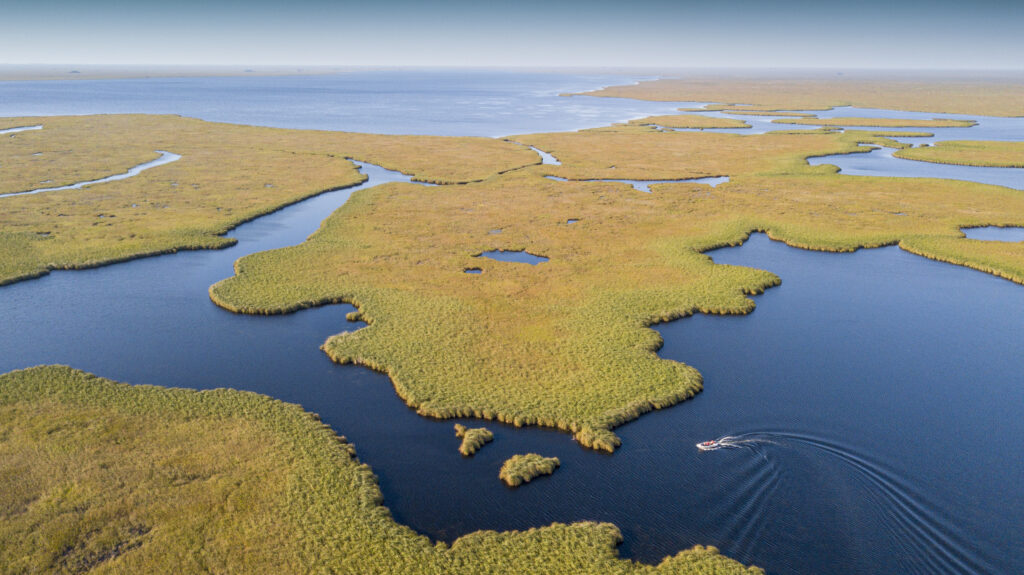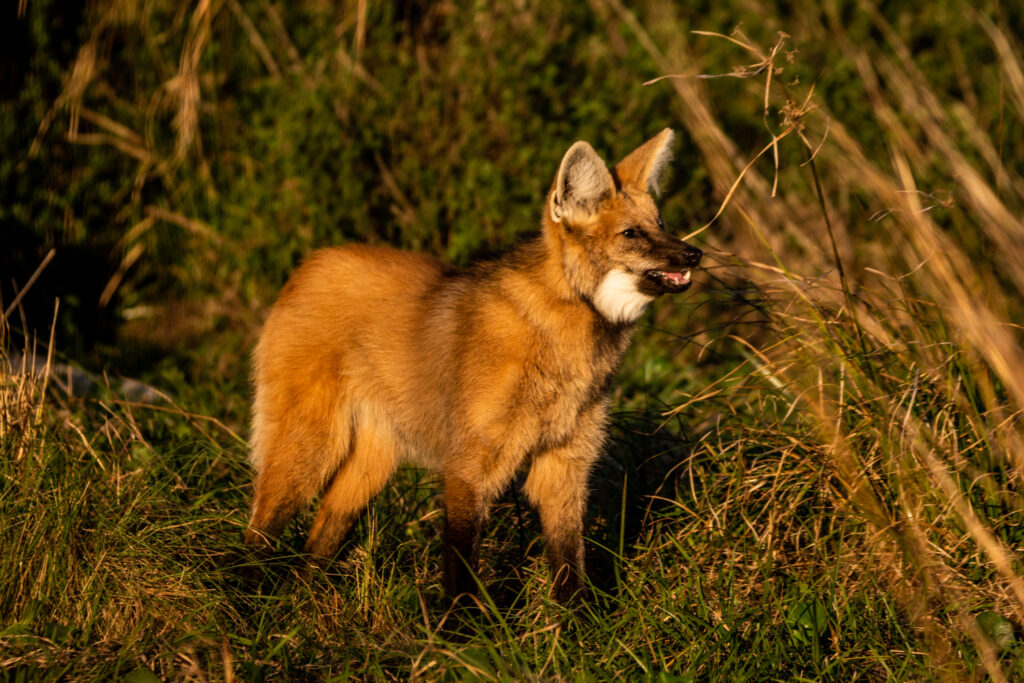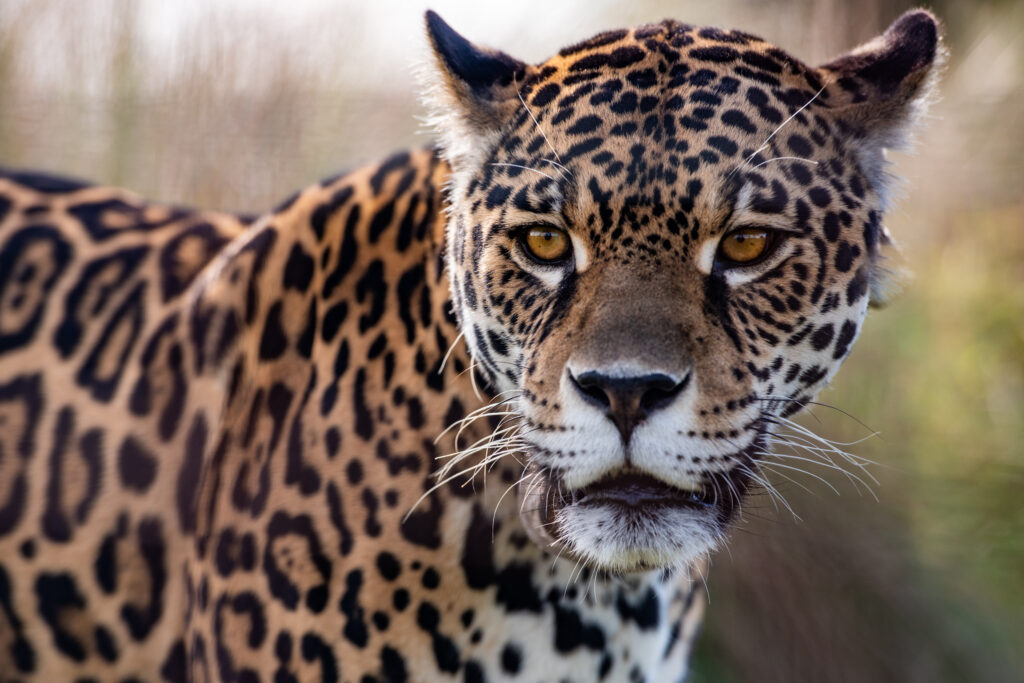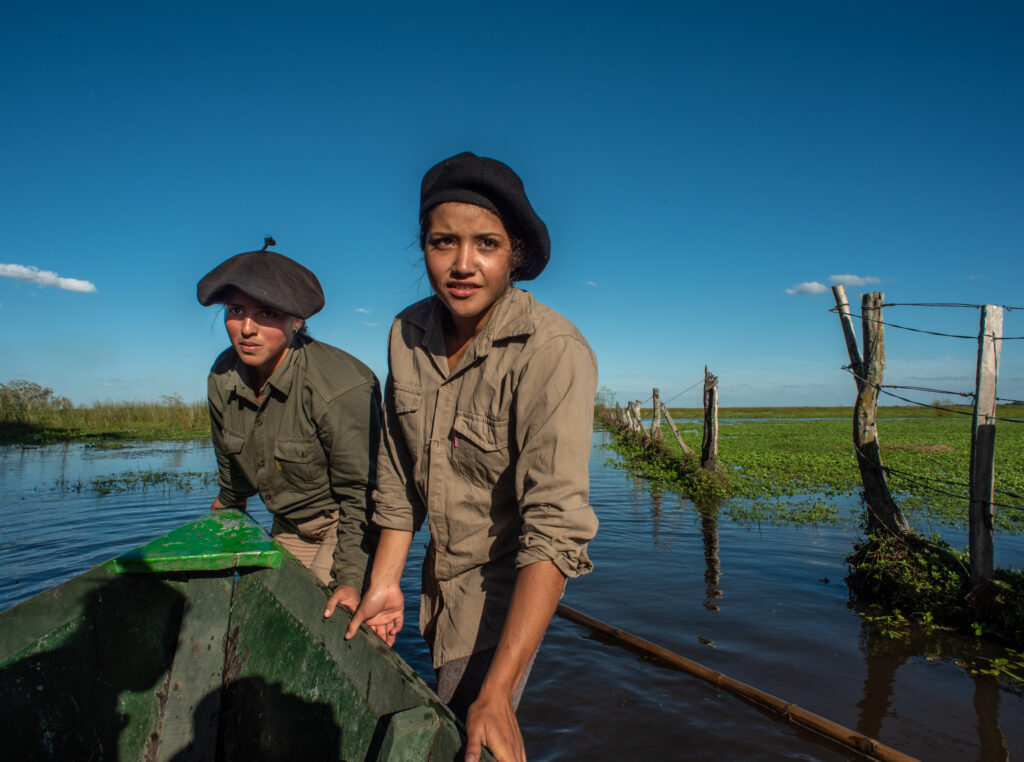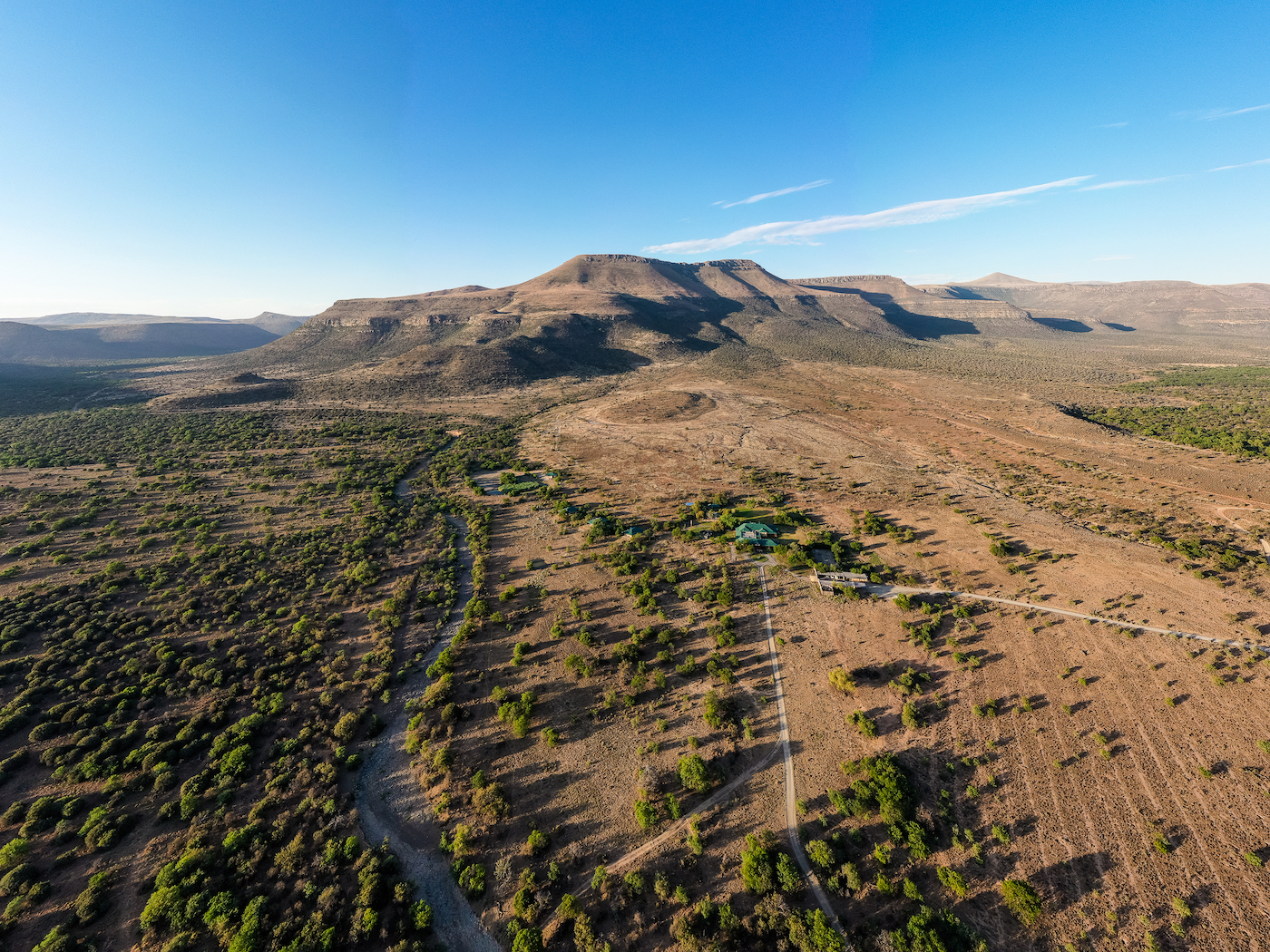The Return of the Jaguar
“I hope that whoever sees this gets the message that these things don’t happen on their own. Everybody has to get out of bed every day and do something meaningful that has nothing to do with themselves, to protect those things you love.” Kristine Tompkins
Forming Iberá National Park
In 1998, Rewilding Argentina (FRA), the offspring of Tompkins Conservation, together with The Conservation Land Trust (CLTA), began buying old cattle ranches along the borders of Iberá Provincial Park. Their aim: to create a National Park where rewilding and habitat restoration could help reverse the extinction of species and resulting environmental degradation. After acquiring more than 150,000 hectares within the Iberá basin and donating it in stages to the Argentine state, Iberá National Park was legally established on Wednesday 5th December, 2018. The current donation agreement allows Rewilding Argentina to continue their valuable restoration of the region’s flora and fauna for a period of at least ten years.
Iberá’s ecosystem
Iberá is often called “the Argentine Pantanal” and is one of the planet’s largest freshwater wetlands, covering more than 3.2 million acres of grasslands and marsh in Corrientes Province of northeastern Argentina. It is home to 30% of the country’s biodiversity and within it, covering 158,000 hectares, lies Iberá National Park.
Here, the ecosystem comprises wetland marshes, swamps, and glimmering tracts of water and expansive lakes. Widely spread scattered grasslands can be found on the sandy uplands, and smatterings of tropical forest, gallery forest and, on the higher ground of the southeast, dry forests, provide sheltered habitat for the resident wildlife. The largest global population of endangered strange-tailed tyrants – aptly named for their quill-like tails sizing twice the length of their bodies – flit between the grassland stalks, whilst the second largest global population of marsh deer can be found roaming drier land. A critical refuge for other threatened species, like the pampas deer, crowned eagle, and maned wolf, it is a wildlife haven made all the more exciting for the recent reintroduction of previously locally extinct species.
Following his visit to Iberá in 2022, Daniel Allen wrote of the landscape:
“From the air, the blue-green patchwork of the Iberá Wetlands (Esteros del Iberá) extends towards every horizon. Networks of channels and creeks adorn the lusher parts of the landscape like shimmering necklaces, connecting lakes and lagoons dotted with yacaré caiman. Squadrons of ibis, egret and spoonbill criss-cross the sky, hinting at the breathtaking biodiversity of this unique aquatic ecosystem.”
Read more about his journey via the link below.
Species reintroduction at Iberá
Thanks to its size and variety of natural habitats, Rewilding Argentina identified a unique conservation opportunity within Iberá National Park for the re-introduction of previously locally extinct species. Alongside the abundance of bird life, where 370 species have been recorded in the last decade alone, and the already thriving population of large vertebrates such as caiman, rhea, capybaras, armadillos, and fox, now stalks the jaguar, a predator that had been extinct from the region since the middle of the twentieth century.
The largest feline of the Americas, the jaguar, will play a fundamental role in maintaining the structure and functionality of Iberá’s ecosystem. As a keystone species, it will help to control populations of other animals lower down in the food chain, such as deer and capybaras which, if allowed to overpopulate, would devastate the local vegetation. On 1st January 2022, the first male adult jaguar roamed free in this region’s wilderness in over 70 years. In March of this year, two newly born jaguar cubs, Overo and Quiyoc, were released into Iberá alongside their mother to join the growing population of their species.
Their return will help to restore natural processes and essential components within a healthy ecosystem, helping to combat biodiversity loss and make the region more resilient in the face of climate catastrophes.
“The rewilding program seeks to recover the ecological functionality of the wetlands by bringing back missing species. As the top predator, the jaguar has a key role to play.” Sebastian Di Martino, Conservation Director of Rewilding Argentina
The jaguar is just one of the many crucial species Rewilding Argentina has reintroduced to Iberá, alongside giant anteater, giant otter, the red-and-green macaws, collared peccary, and the bare-faced curassow. Its waterways now ripple in the wake of swimming, hunting, and bathing inhabitants whilst the treetops echo with soft birdsong, shrill warning cries and the whooping barks of swinging howler monkeys: each sandy bank and stretching plain once again teems with the varied, vibrant life essential for a thriving ecosystem.
Regenerative Economy
In their efforts to rewild the wetlands and restore missing links from the food chain, Rewilding Argentina has helped develop a local economy of nature-based tourism. Their ‘scenic route’ through the expansive waters and grasslands covers more than 1,000 kilometres, passing through seven different communities surrounding the park, whilst ten entrances or gateways provide the public with easy access. With spectacular wildlife, healthy landscapes and the opportunity to enjoy unforgettable experiences in nature, Iberá’s growing reputation as one of Argentina’s prime nature destinations is generating valuable tourism and acting as an economic engine for local development.
Journey to the Iberá Wetlands
Between 22nd – 29th September 2024, we will be taking an exclusive group on an immersive experience in the Iberá Wetlands to engage with Rewilding Argentina’s restoration project firsthand. Guests will stay at Rincón del Socorro Lodge for three nights, one of the homes of Doug and Kristine Tompkins (respectively co-founder of The North Face and Esprit and CEO of Patagonia, and together founders of Tompkins Conservation) as they visit the reserve’s wildlife quarantine centre and learn about the history of the region from guests speakers and wildlife experts, including Rewilding Argentina’s leadership team, Sofía Heinonen and Sebastián di Martino. Waking to the rush of resplendent birdsong, morning drinks will be enjoyed to sweeping views across the ancient wetlands, with days spent tracking wildlife alongside rangers and exploring the wild terrain by kayak, foot and on horseback.
This journey will offer unprecedented access to the inner workings of Rewilding Argentina’s rewilding programme and privileged insight into the journey of Tompkins Conservation, revered as the greatest conservationists of our era. With their stay, guests will contribute to confronting the twin crises of climate chaos and collapsing ecosystems, while learning about the potential for rebounding ecosystems and how they can support community livelihoods and the greater planet.
“The Earth is what we all have in common, and it is our only home. We cannot continue to treat it as if it were a rental property and pass it on to the next generation with little regard for its upkeep.” Dame Jane Goodall
To join the Journey to Argentina and be involved in one of the most remarkable conservation projects of our time, apply via the link below.
DIG A LITTLE DEEPER.
Return of the Jaguar | Discover more here.
Click here for the full itinerary.
Experiencing rewilding firsthand, Geographical.
